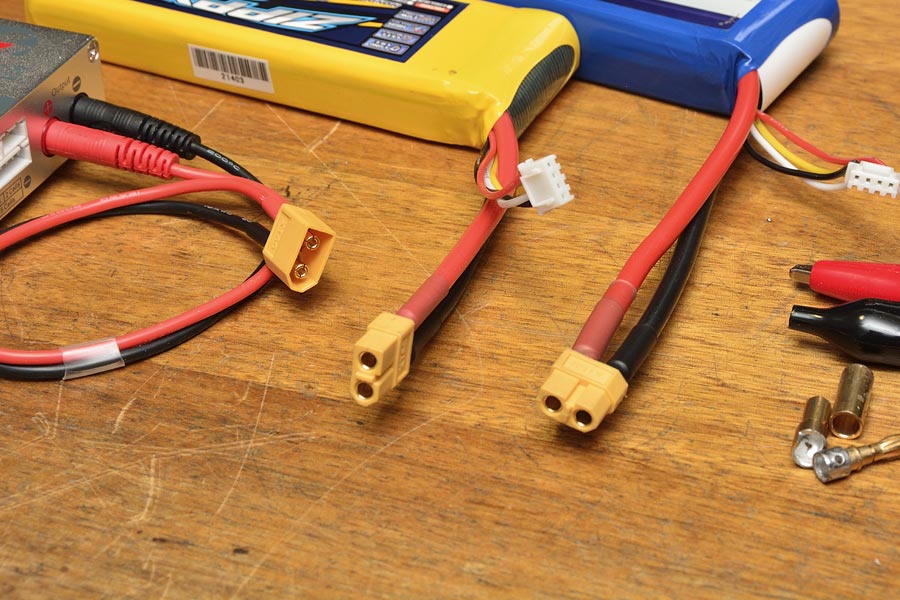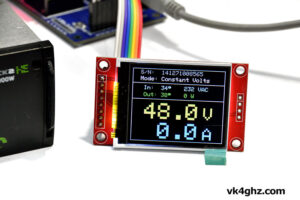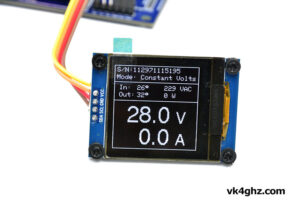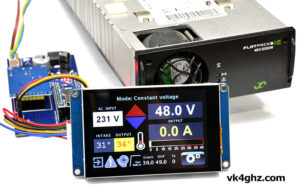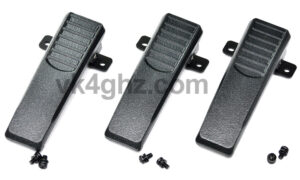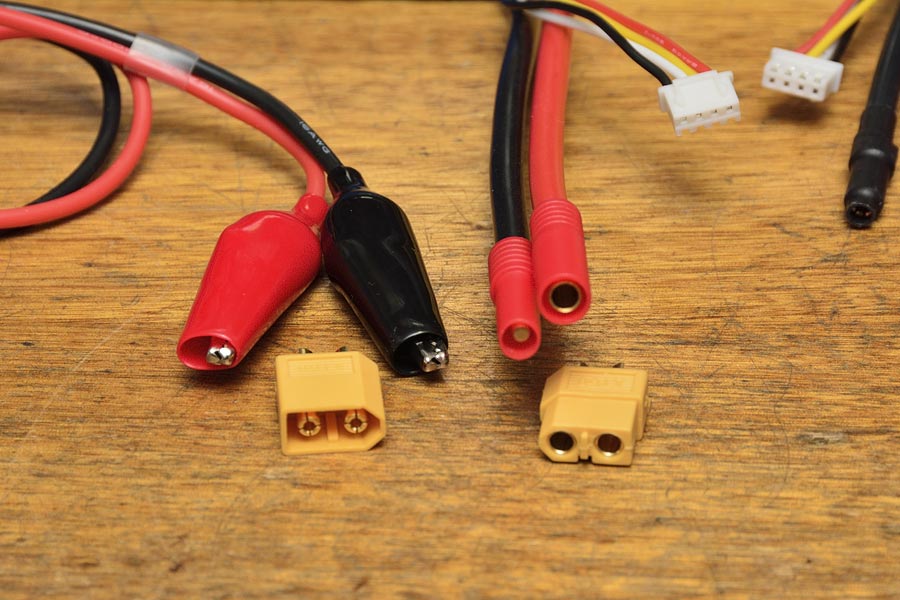
Which connector?
Another $64 question.
Battery charger has alligator clip lead ends, whilst LiPo batteries can come with XT60 or 4mm bullet connectors.
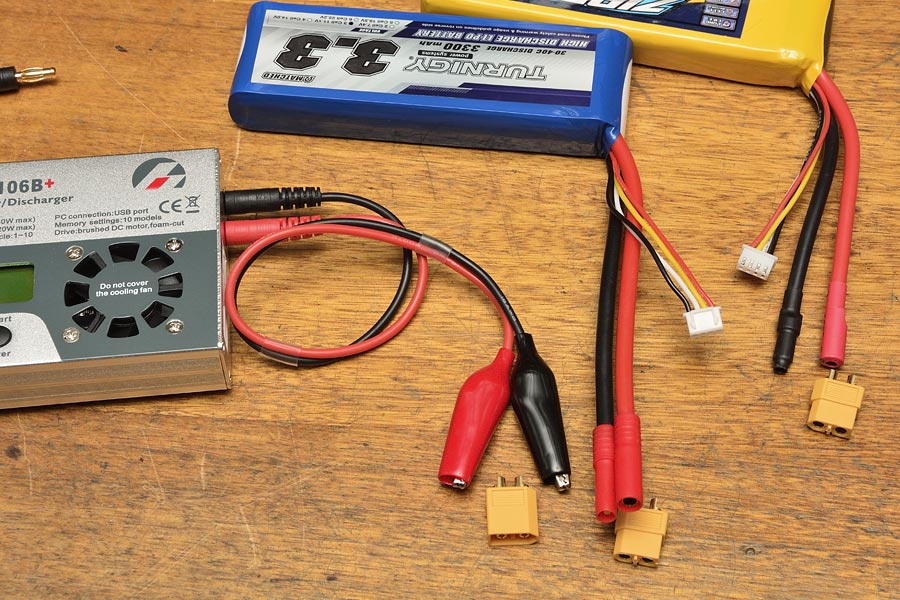
It was decided to standardise on using XT60 connectors.
If you haven’t come across XT60 connectors before, then as described on eflightwiki, they are;
a high-current, low-resistance battery connector sold and developed by Hong Kong-based Hextronik, Ltd., the parent company of internet retailer HobbyKing.
Developed in the public domain with no patent applied for, the XT60 is targeted as a replacement for or alternative to the more expensive and common Deans Ultra-Plug. The XT60 claims easier soldering, easier-to-use shrink wrap tubing and easier connection and disconnection.
The product consists of molded nylon male and female housings with circular gold-plated, spring-loaded contacts and is similar in looks and execution to the E-flite EC3. The manufacturer claims a continuous current rating of over 60A with a heat rating not to exceed 80 degrees C
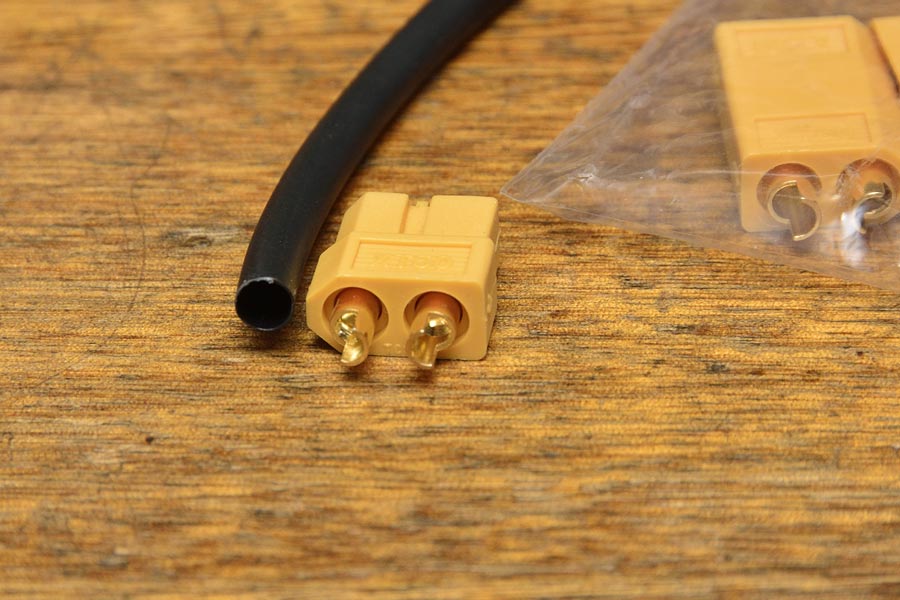
Above: Recess around pin is evident here, allowing heat shrink to cover soldered connection well into the housing, to prevent shorts.

Above: Plug with male pins on the battery charger lead. Socket with female pins on the battery itself.

Pointing out the obvious:
Observe the polarity marks, found on the side of the connector body.
Depending on the gauge wire in use, some carefully filing may be required around the tinned end of your wire ends, so they fit within the pin’s solder cup.
This will be required on thicker battery wires, typically 10AWG.
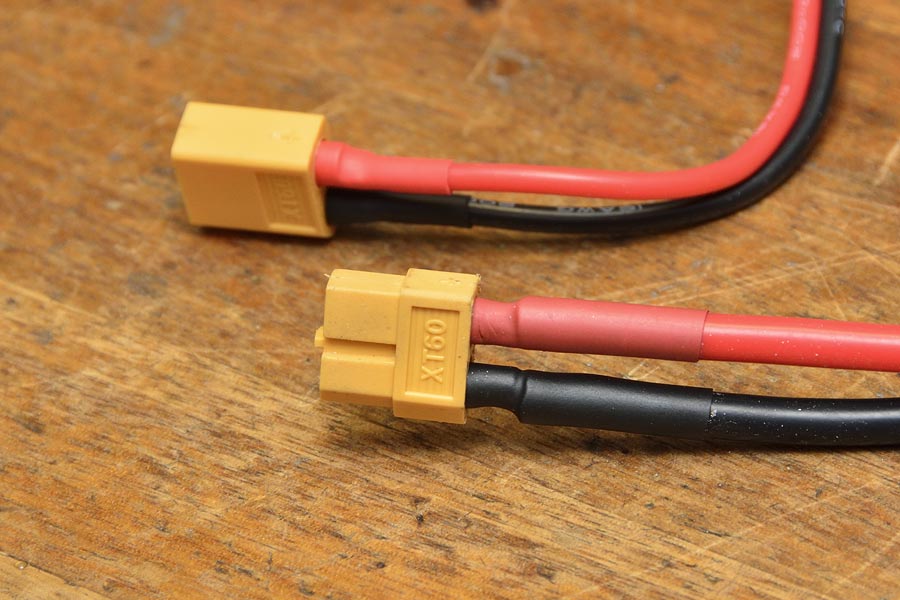
The end result:
